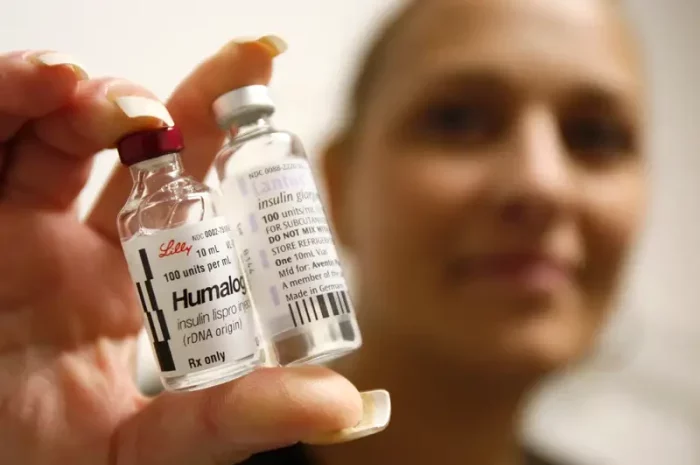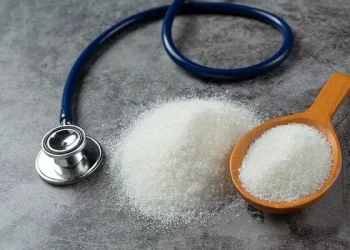In the realm of diabetes management, Continuous Subcutaneous Insulin Infusion (CSII) has emerged as a sophisticated and effective therapeutic modality for individuals with diabetes mellitus. This article aims to provide a comprehensive overview of CSII, including its definition, technology, indications, benefits, challenges, and future directions, to equip healthcare professionals and individuals with diabetes with the knowledge needed to navigate this advanced treatment option.
Understanding Continuous Subcutaneous Insulin Infusion (CSII):
Continuous Subcutaneous Insulin Infusion (CSII), commonly referred to as insulin pump therapy, involves the continuous delivery of rapid-acting insulin subcutaneously via an insulin pump device. Unlike multiple daily injections (MDI), where insulin is administered manually using syringes or pens, CSII provides a more precise and customizable method of insulin delivery, mimicking the physiological secretion of insulin by the pancreas.
Technology Behind CSII:
CSII systems consist of three main components:
1. Insulin Pump: The insulin pump is a small, portable device that houses a reservoir of rapid-acting insulin and delivers precise insulin doses continuously throughout the day (basal insulin) and in response to meals or correction needs (bolus insulin). Insulin pumps are equipped with user-friendly interfaces for programming insulin delivery rates, setting basal and bolus doses, and monitoring insulin delivery.
2. Infusion Set: The infusion set consists of a thin, flexible cannula or needle that is inserted into the subcutaneous tissue, typically on the abdomen, buttocks, or thighs, to deliver insulin continuously. Infusion sets come in various lengths and configurations to accommodate individual preferences and body types.
3. Continuous Glucose Monitoring (CGM) System (Optional): Many modern insulin pumps are compatible with integrated or standalone CGM systems, which continuously monitor interstitial glucose levels and provide real-time glucose data to inform insulin dosing decisions. CGM integration allows for enhanced glycemic control, reduced hypoglycemia risk, and greater convenience in diabetes management.
Indications for CSII:
CSII may be considered for individuals with diabetes who meet one or more of the following criteria:
1. Suboptimal Glycemic Control: Despite adherence to MDI therapy and lifestyle modifications, individuals with diabetes may experience persistent hyperglycemia, hypoglycemia, or glycemic variability that is difficult to manage with conventional therapy.
2. Hypoglycemia Unawareness: Individuals with impaired hypoglycemia awareness or frequent episodes of severe hypoglycemia may benefit from the added safety features and flexibility of CSII, such as adjustable basal rates and temporary basal suspensions.
3. Lifestyle Flexibility: CSII offers greater flexibility in meal timing, physical activity, and travel compared to MDI, making it an attractive option for individuals with variable schedules or demanding lifestyles.
4. Insulin Sensitivity or Resistance: CSII allows for precise titration of insulin doses to accommodate individual insulin sensitivity or resistance patterns, optimizing glycemic control and minimizing insulin-related side effects.
5. Pregnancy: CSII may be preferred over MDI during pregnancy to achieve tighter glycemic control and reduce the risk of maternal and fetal complications associated with uncontrolled diabetes.
Benefits of CSII:
1. Improved Glycemic Control: CSII has been shown to improve glycemic outcomes, including reductions in hemoglobin A1c (HbA1c) levels, time spent in hyperglycemia and hypoglycemia, and glycemic variability, compared to MDI therapy.
2. Greater Flexibility: CSII offers greater flexibility in meal timing, physical activity, and lifestyle choices, as insulin delivery rates can be adjusted easily to accommodate individual needs and preferences.
3. Reduced Hypoglycemia Risk: CSII allows for precise titration of basal insulin rates and on-demand bolus doses, reducing the risk of hypoglycemia compared to fixed-dose insulin regimens.
4. Convenience: CSII eliminates the need for frequent insulin injections and provides continuous insulin delivery, reducing the burden of diabetes management and improving quality of life for individuals with diabetes.
5. Customizable Insulin Delivery: CSII allows for personalized insulin delivery profiles tailored to individual insulin requirements, insulin sensitivity, and lifestyle factors, optimizing glycemic control and minimizing insulin-related side effects.
Challenges and Considerations:
While CSII offers numerous benefits, there are also challenges and considerations to be aware of:
1. Technical Complexity: CSII therapy requires proficiency in pump operation, infusion set insertion, and insulin dosing calculations, necessitating comprehensive education and training for both healthcare providers and individuals with diabetes.
2. Infusion Site Management: Proper infusion site selection, rotation, and monitoring are essential to prevent complications such as infusion site reactions, lipohypertrophy, or insulin absorption issues.
3. Cost: CSII therapy can be costly, requiring initial investment in pump equipment, supplies, and ongoing maintenance. Insurance coverage and reimbursement policies may vary, impacting access to CSII for some individuals with diabetes.
4. Adherence and Compliance: Successful CSII therapy relies on adherence to insulin pump use, infusion set changes, blood glucose monitoring, carbohydrate counting, and mealtime bolusing, requiring motivation, commitment, and self-management skills.
5. Technical Issues and Malfunctions: Insulin pump malfunctions, software errors, infusion set failures, or sensor inaccuracies may occur, necessitating troubleshooting and timely resolution to avoid disruptions in insulin delivery and potential adverse outcomes.
Future Directions and Innovations:
As technology continues to advance, the field of CSII holds promise for future innovations and enhancements, including:
1. Closed-Loop Systems: Closed-loop or artificial pancreas systems that combine CSII with CGM technology and automated insulin dosing algorithms offer the potential for fully automated and adaptive insulin delivery, further improving glycemic control and reducing diabetes-related burden.
2. Smart Insulin Pump Features: Integration of smart technologies, such as Bluetooth connectivity, smartphone apps, predictive algorithms, and remote monitoring capabilities, enhances user experience, simplifies data management, and facilitates real-time communication between individuals with diabetes and healthcare providers.
3. Improved Infusion Set Design: Advances in infusion set design, materials, and insertion techniques aim to minimize discomfort, improve adherence, and optimize insulin absorption, reducing the risk of infusion site complications and enhancing user satisfaction.
4. Personalized Therapy Approaches: Tailored therapy approaches based on individual characteristics, preferences, and goals, such as time-in-range targets, insulin sensitivity patterns, and lifestyle factors, optimize treatment outcomes and promote patient-centered care.
Conclusion:
Continuous Subcutaneous Insulin Infusion (CSII) represents a sophisticated and effective treatment option for individuals with diabetes, offering improved glycemic control, greater flexibility, and enhanced quality of life compared to conventional insulin therapy. By leveraging advanced technology, personalized treatment approaches, and comprehensive education and support, CSII empowers individuals with diabetes to take control of their condition and achieve optimal health outcomes. As CSII continues to evolve and innovate, it holds promise for transforming the landscape of diabetes management and shaping the future of diabetes care.

























